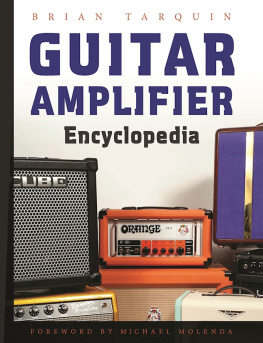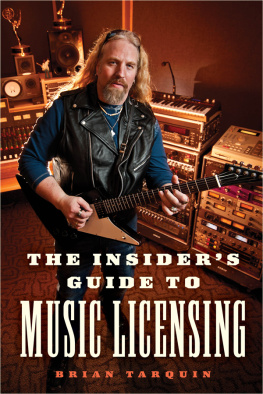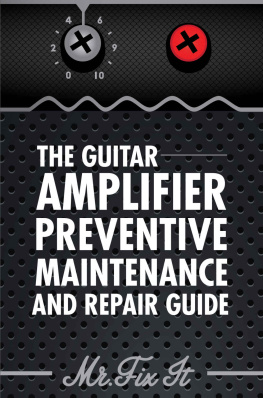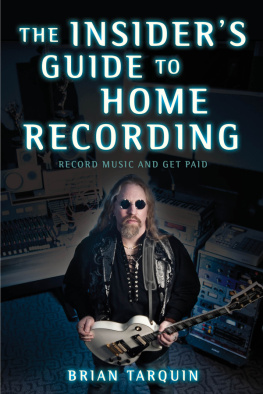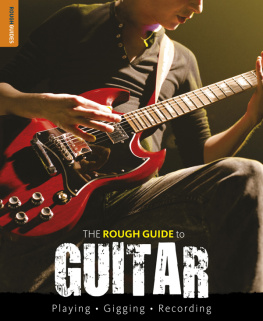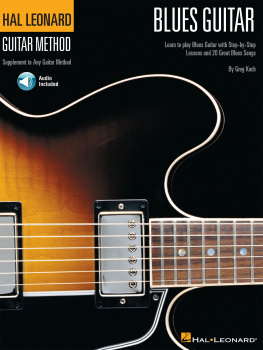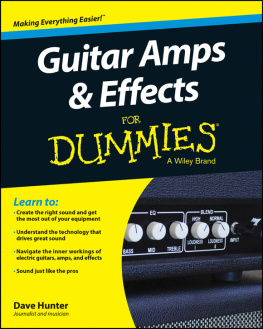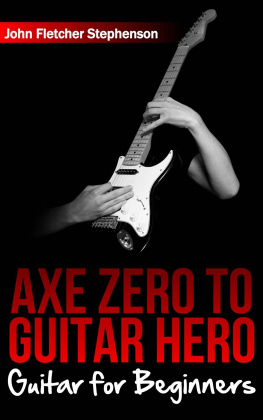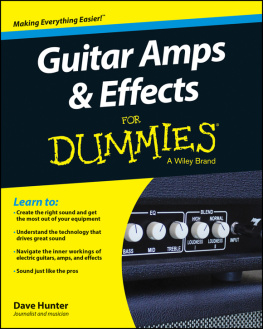Copyright 2016 by Brian Tarquin
All rights reserved. Copyright under Berne Copyright Convention, Universal Copyright Convention, and Pan American Copyright Convention. No part of this book may be reproduced, stored in a retrieval system, or transmitted in any form, or by any means, electronic, mechanical, photocopying, recording, or otherwise, without the express written consent of the publisher, except in the case of brief excerpts in critical reviews or articles. All inquiries should be addressed to Allworth Press, 307 West 36th Street, 11th Floor, New York, NY 10018.
Allworth Press books may be purchased in bulk at special discounts for sales promotion, corporate gifts, fund-raising, or educational purposes. Special editions can also be created to specifications. For details, contact the Special Sales Department, Allworth Press, 307 West 36th Street, 11th Floor, New York, NY 10018 or .
19 18 17 16 15 5 4 3 2 1
Published by Allworth Press, an imprint of Skyhorse Publishing, Inc.
307 West 36th Street, 11th Floor, New York, NY 10018.
Allworth Press is a registered trademark of Skyhorse Publishing, Inc., a Delaware corporation.
www.allworth.com
Cover design by Mary Belibasakis
All photos by Erik Christian, Michael Howard, Ricky Restiano, and Crystal Scheidies
Cover photo credit: Erik Christian
Library of Congress Cataloging-in-Publication Data is available on file.
Print ISBN: 978-1-62153-499-0
Ebook ISBN: 978-1-62153-501-0
Printed in China
Table of Contents
Foreword
I first knew a guitar amplifier could change the world when I heard of the Little Green Amp. It was actually a 1962 Elpico, purchased that same year from a radio shop in Muswell Hill, London, by The Kinks guitarist Dave Davies. He originally viewed the tiny Elpico as an additional preamp for his Vox AC30, but along the way, some creative and mischievous angel whispered in his ear, and that amp became much more. Davies slashed the Elpicos speaker cone with a razor, plugged its output into the AC30, and the sound that was You Really Got Me was born. Miraculous!
As you can (hopefully) see, guitar amps are not just cold, boring circuit boxes for bringing the noise. Amps are the essential and mystical lovers of the electric guitar, and like with any object of desire, a lot of neural and emotional triggers have to fire off before a guitarist stares breathlessly and says, You are the one. None of this, of course, has anything to do with reality. Amp tone is as subjective as it gets, so the best or most appropriate amp may be the one standing alone at the outside edges of the dance floor. You see, guitarists become obsessed with different amps for myriad reasons. Les Paul was always seeking the cleanest, truest, most transparent sound an amp could reproduce. Jimi Hendrix? Well, he didnt want that at all. Jimi wanted the beatific cacophony of a world gone mad with love, death, brotherhood, hate, peace, war, and everything written in the stars: in short, huge Marshall stacks spewing 110 decibels of grind. And then, theres everything in between, from mini amps, micro amps, practice amps, modeling amps, solid-state amps, tube amps, combos, half-stacks, boutique designs, and major-manufacturer builds. Its a jungle.
But whether you know what youre after and want to celebrate it, are looking to change your sound but dont know how, or are starting out on a quest for your own individual tone and need to know your options, Guitar Amplifier Encyclopedia will provide counsel and direction. By absorbing Brian Tarquins survey of the past and present of guitar amplification, youll be a better-informed player about what makes particular amps weave their sonic magic. Its also simply a super-fun book for amp freaks. So, go find your bliss.
Michael Molenda
Editor in Chief, Guitar Player magazine
30 September 2014
CHAPTER 1
Amplifier History

Bell 15RV Reverb combo made by Gibson with four inputs with one Jensen speaker
The Beginning
The one instrument in the world that needed to be amplified at the dawn of modern music was certainly the guitar. Just think of those noisy big band horns screaming their obnoxious notes, how the hell could a guy like Charlie Parker be heard over such a commotion? Im a fan of classic films, and it always makes me laugh when I see a scene with a band leader and his baton waving at the orchestra and there in the corner is the lonely guitar player strumming away until he is blue in the face, but you cant hear a single note hes playing. I mean why is the guitar player even there if he cant be heard, just to keep quarter-note rhythm beats? It is absolutely no wonder why the amplifier was invented for the guitar! We can thank Benny Goodman for one thing, and thats integrating the talented black guitarist, Charlie Christian, which led to the electric guitar and amplifier. Whether you like the eras music or not, we certainly wouldnt have Hendrix, Clapton, Van Halen, or Satriani without Christian, or Gibson for that matter.
Amplification was first addressed for the electric guitar in the early 1930s for the Hawaiian guitarists who played this frying-pan-looking guitar on their lap. Companies like Rickenbacker, Gibson, Epiphone, and National tried to fulfill the need for volume by producing amps to accompany their Hawaiian guitars like the Rickenbacker A22, Gibson Roy Smeck, Gibson EH-185, Epiphone Model M, and Rickenbackers Electro Tenor amplifier. You see, during the pre-World War II era, Rickenbacker had a large investment in the Hawaiian guitar market, as opposed to companies like National, Dobro, Gibson, and Epiphone who devoted their production to resonator and F-hole guitars. The Hawaiian-style guitar at the time of the late twenties through the thirties was a much more profitable market than the so-called Spanish neck guitars produced by Gibson.
Bandleaders of the twenties and thirties didnt take the guitar seriously in their music, looking upon it as a fad or a quirky instrument. Guitarists like Eddy Lang were the exception, accompanying singers like Ruth Etting in the 1932 film A Regular Trouper and Bing Crosby in the The Big Broadcast of 1932 . Lang would use the original, acoustic version of the Gibson L-4 and L-5, before pickups were introduced. Then there was Eddie Durham, who was Count Basies guitarist, who is noted as recording the worlds first jazz electric guitar solo in 1938. He performed it on a Gibson ES-150 guitar with the Lester Young Kansas City Five. Ironically, the same year saw guitarists George Barnes with Big Bill Broonzy record electric guitar solos as well.
Whether it was timing or just fate, Benny Goodman, or all of the above, Charlie Christian was the poster boy for introducing the electric guitar into contemporary music. In Bonham, Texas, on July 29, 1916, Charlie was born into a musical family. Both his mother and father played the piano and trumpet as sound score in a local silent movie theatre. In 1918, after the family moved to Oklahoma City, Charlie began guitar lessons from his father. By 1928, he became heavily influenced by tenor saxophonist Lester Young; Charlie even scat sang Youngs solos while playing the guitar. In fact T-Bone Walker was a childhood friend of Christians, and they both took guitar lessons from Ralph Big-Foot Chuck Hamilton in the earlier thirties. Moreover, a chance meeting with Eddie Durham in 1937 changed the course of Charlies fate, because he was so influenced by Eddies guitar playing. Soon after that meeting Christian went out and bought a Gibson ES- 150 with the accompanying amp and started to woodshed. Within a year Charlie was getting local recognition in the Midwest as a hometown hero. Christian was even playing the difficult styles of Django Reinhardts St. Louis Blues solo, verbatim.

